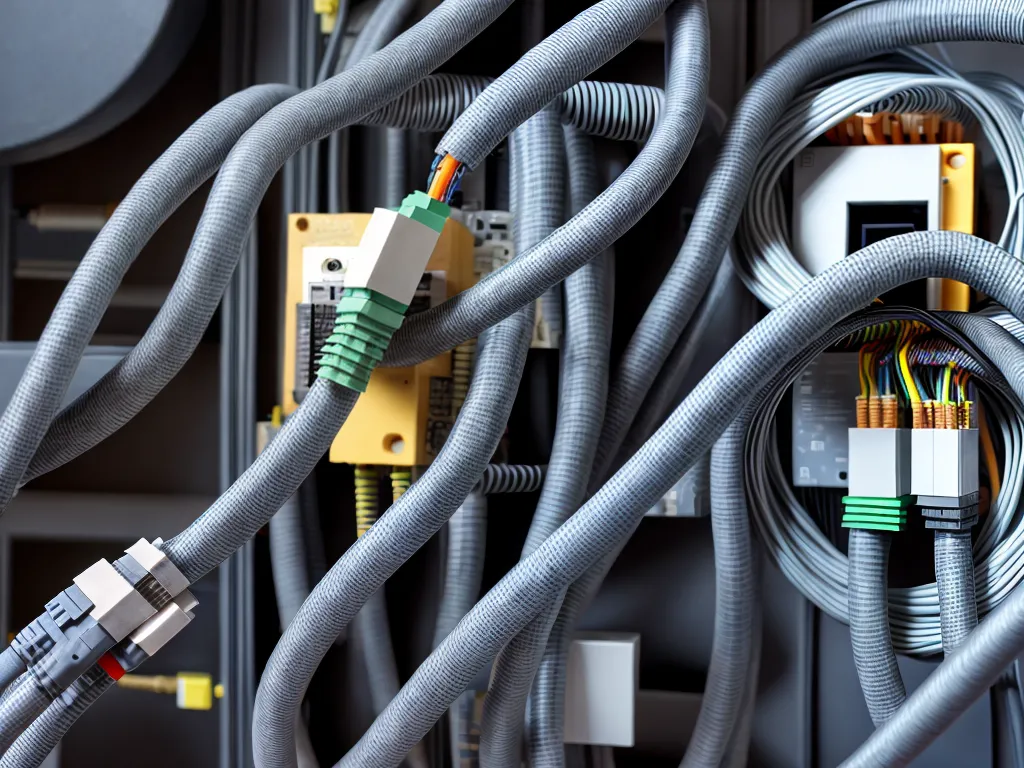
Low Voltage Cables: Do We Really Need Them?
Low voltage cables are essential in modern electrical systems and provide many benefits compared to standard voltage cables. In this article, I will examine what low voltage cables are, why we need them, and the key advantages they offer.
What Are Low Voltage Cables?
Low voltage cables are electrical cables that operate at less than 50 volts of electricity. This is considerably lower than the 120-240 volt current in standard power cables used for lighting and appliances.
Some of the most common types of low voltage cables include:
- Doorbell wires - These typically operate at 8-24 volts.
- Thermostat wires - Typically 24 volts.
- Alarm system wires - 12 or 24 volts.
- Landscape lighting wires - 12 or 24 volts.
- Computer and AV wires - Carry signals of 5-12 volts.
The key factor is that low voltage cables carry a small, limited amount of electricity that is not hazardous like the higher voltages in standard power cables.
Why Are Low Voltage Cables Needed?
There are several important reasons why low voltage cables are essential:
Safety
Higher voltage cables pose a serious shock hazard, especially in wet conditions. But with low voltage cables, there is no risk of electrocution if the bare wires are touched. This makes low voltage much safer for DIY installations.
Lower Energy Use
Low voltage circuits allow the same work to be done with less energy since the currents are lower. This can help reduce electric bills.
Noise Reduction
Low voltage cables are less susceptible to electromagnetic interference (EMI). This helps prevent signal noise, distortions, and interruptions in devices like burglar alarms, thermostats, and computers.
Longer Runs
Low voltage wires can make longer runs than standard 120 volt cables before voltage drop becomes a problem. Runs of up to 250 feet are possible with 24 volt landscape lighting cables.
Multiple Applications
Low voltage has become indispensable for many uses like landscape lighting, doorbells, thermostats, alarm systems, and more. Many devices require lower voltage to operate properly.
Key Benefits of Low Voltage Cables
Some of the biggest benefits that make low voltage cables a necessity include:
-
Safety - No risk of dangerous shocks.
-
Flexibility - Low voltage can be run long distances.
-
Reliability - Less susceptible to interference and voltage drops.
-
Energy Efficiency - Lower power demands than 120V.
-
Control - Allowing devices like thermostats to function.
-
Affordability - Lower voltage makes DIY installations simpler.
Safety
Of all the benefits, safety is perhaps the most significant advantage of low voltage. Especially for outdoor landscape lighting, low voltage dramatically reduces the risks of electrocution and electrical fires. I would never run 120V lighting cables in my yard due to the potential hazards. But with 12V landscape lighting wire, I can install my own system safely.
Control
Low voltage also provides the ability to control devices that would otherwise need high voltage. For example, Nest and Ecobee smart thermostats require a 24V power source to operate. Low voltage gives us control over our HVAC systems. The same goes for alarm systems and other automation devices that need lower voltages to function properly.
Reliability
Finally, low voltage offers excellent reliability compared to higher voltage wiring. Because low voltage circuits are less prone to voltage drops, signal noise, EM interference, and other issues, they offer trouble-free operation for applications like AV systems, computers, and security systems that demand dependability. I installed CAT6 ethernet cabling inside my house instead of WiFi to ensure the most reliable signal possible for my home office network.
Final Thoughts
In summary, low voltage cables offer substantial benefits related to safety, energy efficiency, reliability, flexibility, and control over electrical devices. They allow us to power everyday devices like doorbells, thermostats, landscape lights, computers, and alarms that higher voltage cables are unsuitable for. While they may not be needed for lighting and major appliances, low voltage cables have become a vital part of modern electrical systems and buildings. Their unique advantages make them a necessity, not just an option, for many applications.